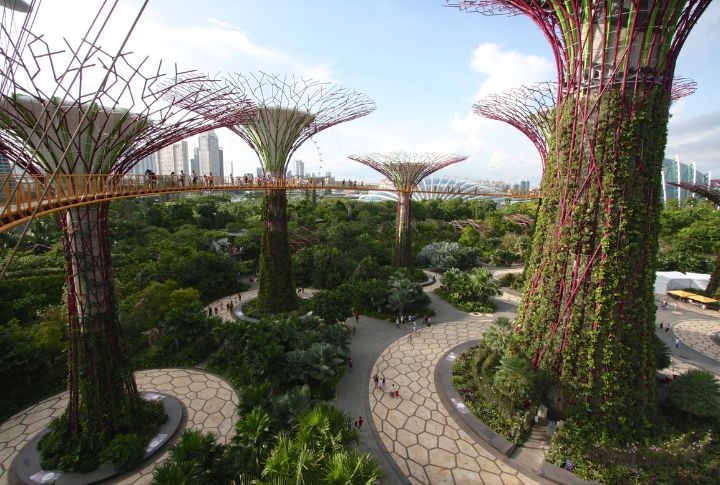
Urban design often pushes the boundaries of creativity and ingenuity. Architects and builders from different backgrounds masterfully blend functionality with artistic expression in ways that leave lasting impressions. Just when we think we’ve seen it all, another concept somewhere reminds us that there is no limit to the power of our imagination.
Jewel Changi Airport, Singapore
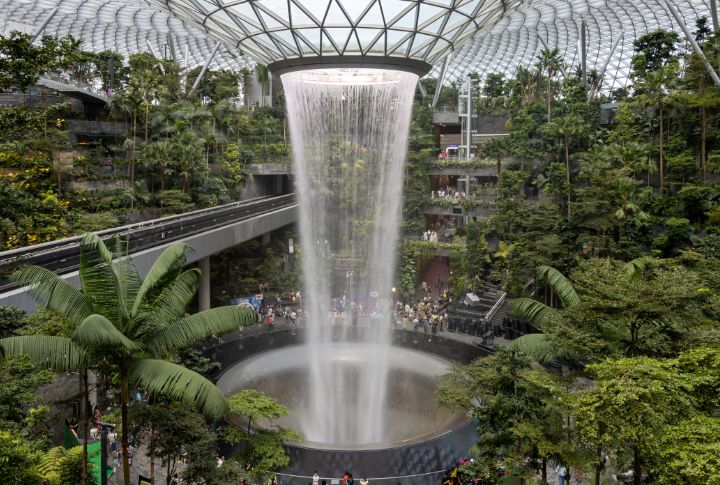
Singapore’s Jewel Changi Airport has the world’s tallest indoor waterfall, the HSBC Rain Vortex. At 131 feet, it cascades through the center of a stunning glass-and-steel dome surrounded by lush indoor gardens. The Jewel masterfully combines retail, dining, and entertainment with natural beauty. It also recycles rainwater, serving as a sustainable architectural feature.
Cloud Gate, Chicago
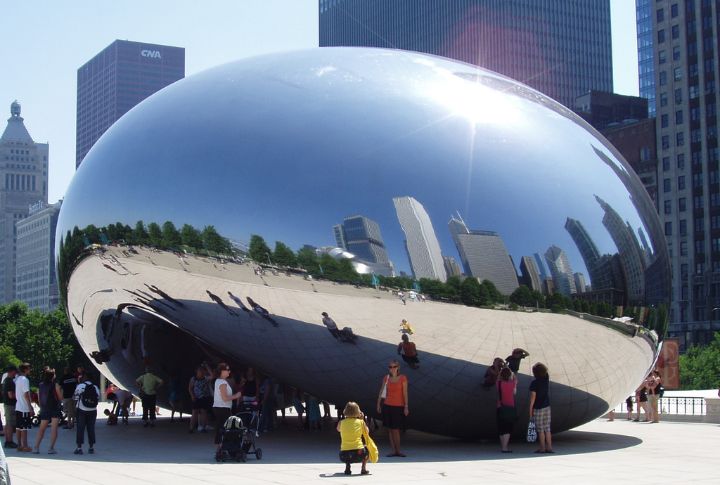
Cloud Gate, popularly known as “The Bean,” is a public sculpture in Chicago, Illinois. British-Indian artist Anish Kapoor created it; the sculpture comprises 168 stainless steel plates, seamlessly welded together and weighing approximately 110 tons. The perfectly polished surfaces reflect Chicago’s skyline and the park surroundings in a fashion rarely seen elsewhere.
Superkilen Park, Copenhagen
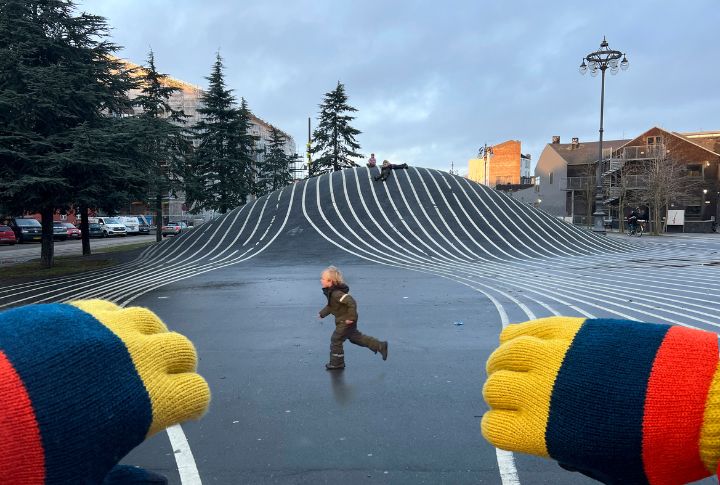
Spanning about 30,000 square meters, the Superkilen Park in Copenhagen, Denmark, is a sight to behold. With three zones—Red, Black, and Green—the park showcases more than 100 unique objects sourced from different countries. These include a Japanese slide, a Moroccan fountain, and Iraqi swings. Superkilen was commissioned to celebrate diversity and foster integration.
The Singing Ringing Tree, Burnley
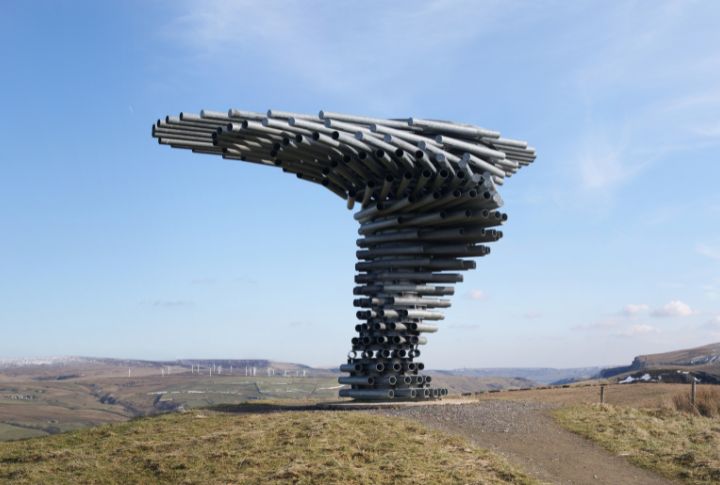
This art installation in Burnley, England, doubles as a musical sculpture and a tourist attraction. Called the Singing Ringing Tree, the statue is 10 feet tall and made of galvanized steel pipes arranged in a tree-like structure. Its strategic location on a hilltop offers panoramic views, and wind passing through the pipes produces melodic sounds.
Eshima Ohashi Bridge, Japan

The impressive Eshima Ohashi Bridge, nicknamed the “Rollercoaster Bridge,” spans over 1.7 kilometers. It connects Matsue in Shimane Prefecture to Sakaiminato in Tottori Prefecture. Built to accommodate large ships passing underneath, this Japanese wonder features steep inclines that give it a dramatic, rollercoaster-like appearance when viewed from certain angles.
Cube Houses, Rotterdam
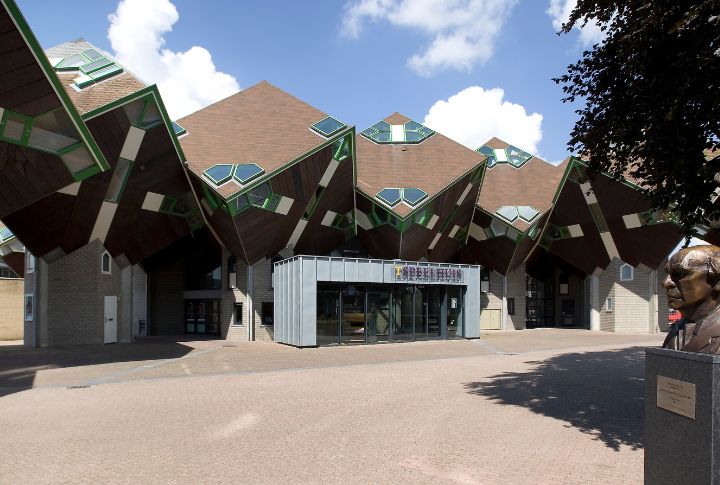
Piet Blom constructed Rotterdam’s Cube Houses, which are located in the Netherlands’ Old Harbor and Black Station. Blom created the cube-shaped homes as an abstract forest of trees, optimizing space in the town’s urban setting. They consist of 38 residential cubes, each spanning about 100 square meters and carefully tilted at 45 degrees.
Gardens by the Bay, Singapore
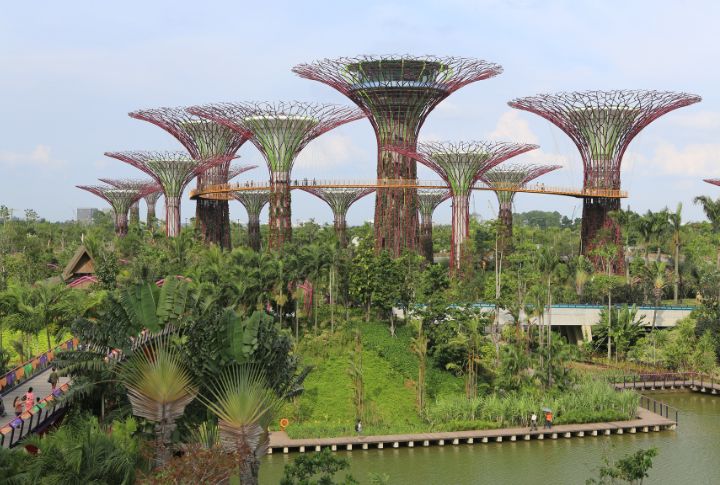
Gardens by the Bay, a massive 101-hectare nature park, sits in the heart of Singapore, adjacent to Marina Reservoir. It opened in 2012 and is central to Singapore’s vision to become a “City in a Garden.” Its iconic Supertree Grove comprises vertical gardens up to 50 meters tall, some connected by an aerial walkway.
Metropol Parasol, Seville
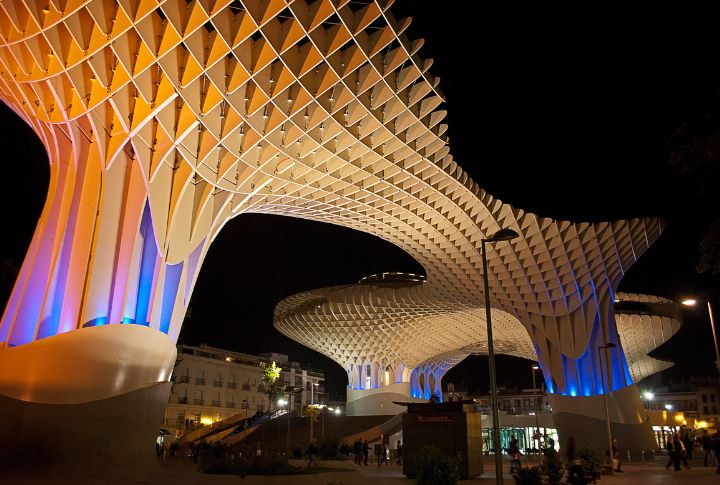
Spain’s Metropol Parasol, known as “The Mushrooms” because of its shape, is another architectural marvel. The masterpiece stands 26 meters tall and comprises six interconnected parasols made entirely of laminated timber. As the world’s largest wooden structure, Parasol contains an archaeological museum, a farmers’ market, restaurants, and a rooftop terrace.
Wuppertal Suspension Railway, Wuppertal
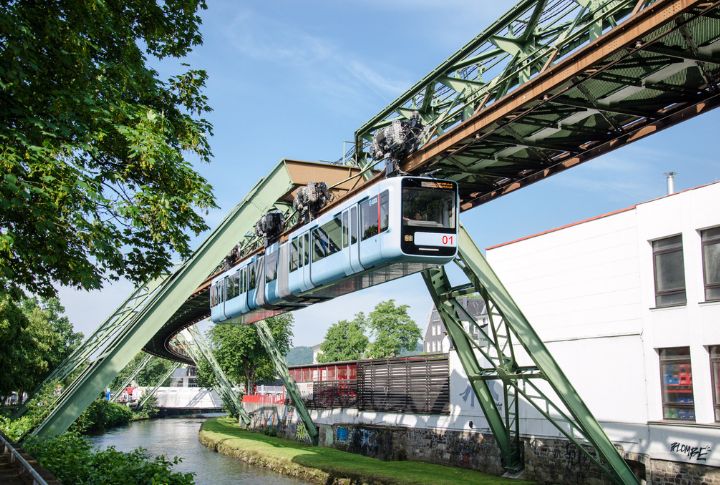
Despite being commissioned in 1901, the Wuppertal Suspension Railway is as impressive as it is useful. The “Schwebebahn,” as it is locally known, is one of the world’s oldest transportation systems. The Wupper River runs beneath this monorail system, which spans over 13.3 kilometers. Schwebebahn has remained reliable for more than a century.
Bosco Verticale, Milan

The Vertical Forest, or Bosco Verticale, has two eco-friendly residential towers adorned with about 900 trees, 5,000 shrubs, and 11,000 plants. Architect Stefano Boeri constructed the towers to combat urban pollution by absorbing carbon dioxide and producing oxygen. It also reduces energy consumption by providing natural insulation.
Snow Village Hotel, Kittilä
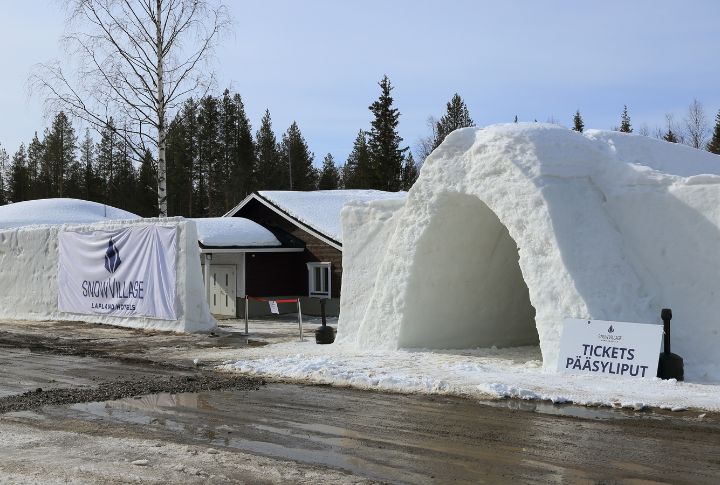
Snow Village Hotel features themed ice and snow buildings. International artists gather annually every winter to rebuild the edifice, varying the design every time. Its many features include intricately decorated rooms and a snow chapel for weddings. Guests sleep on ice beds insulated with reindeer hides and thermal sleeping bags.
The Water Bridge, Magdeburg
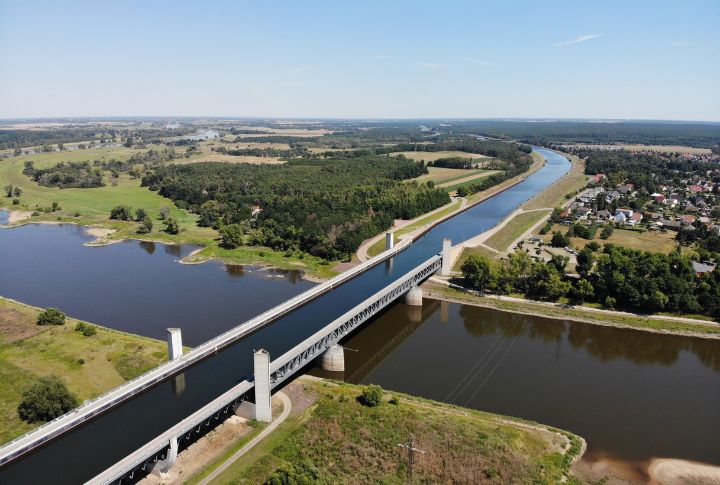
Magdeburg in Germany is home to the planet’s longest navigable aqueduct. At 3,012 feet, The Water Bridge connects the Elbe-Havel Canal to the Mittelland Canal, enabling uninterrupted waterborne traffic between eastern and western Germany. The bridge was completed in 2003 after six years of construction and cost approximately €500 million.
The Upside-Down House, Szymbark
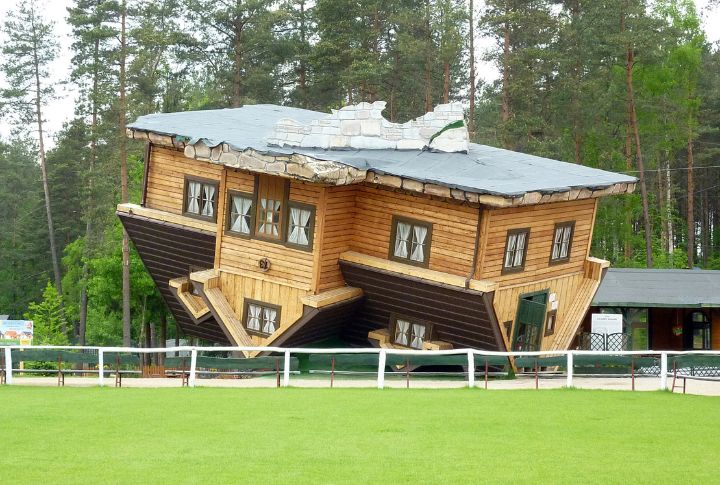
Polish businessman Daniel Czapiewski built this house to appear flipped on its roof. Even the furniture and decorations are suspended from the “ceiling,” so that visitors seem to walk on the ceiling and walls. This building was intended to symbolize the upheaval and chaos of life under communist regimes.
Capital Gate, Abu Dhabi
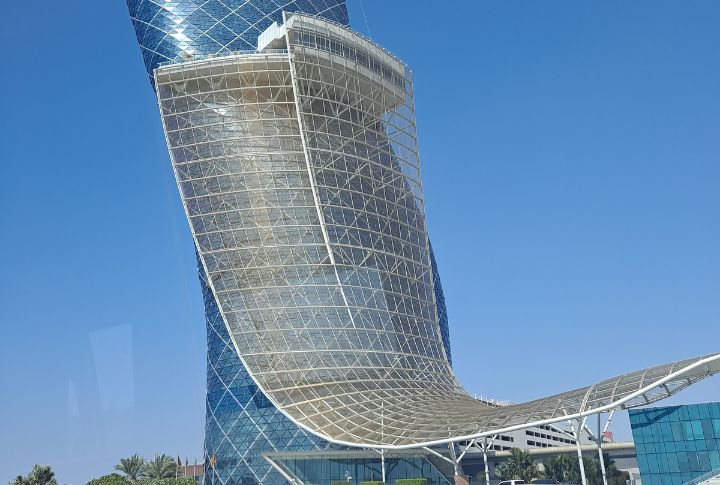
Popularly called the “Leaning Tower of Abu Dhabi,” the Capital Gate tilts 18 degrees westward, surpassing the lean of Italy’s Tower of Pisa. An advanced engineering core helps stabilize the structure’s dramatic inclination. Tourists are captivated by its beautifully fashioned interior, which houses several luxury offices and the Hyatt Hotel.
Magic Roundabout, Swindon
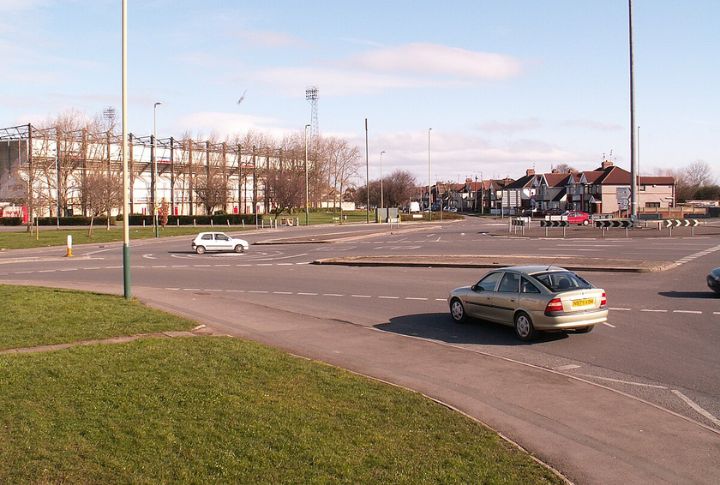
If you’re visiting Magic Roundabout for the first time, be sure to go with a guide. Found in Swindon, England, this surprising facility allows traffic to flow clockwise around a central roundabout and counterclockwise around five mini-roundabouts. Such a complex traffic system offers an efficient solution for managing congestion at a major junction.
Big Duck, Flanders, New York
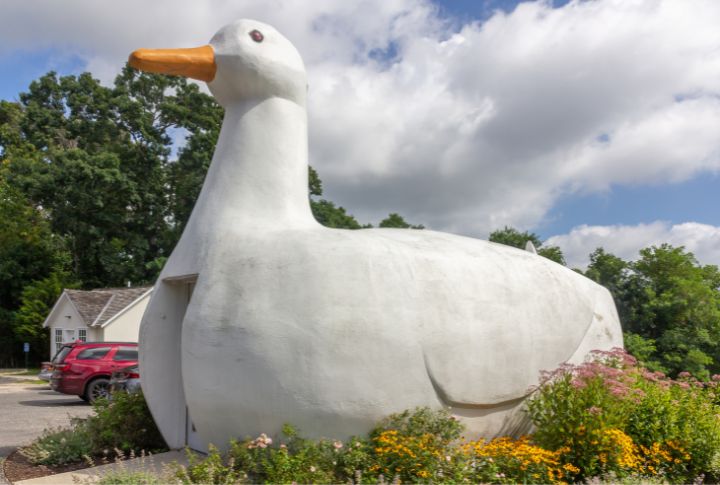
Big Duck in Flanders, New York, was constructed in 1931 as a place to sell ducks and duck eggs. It was shaped like a giant duck, complete with a round, plump body and large webbed feet. All 20 feet of the building initially served as a functional farm stand but is now a local landmark.
Carhenge, Nebraska
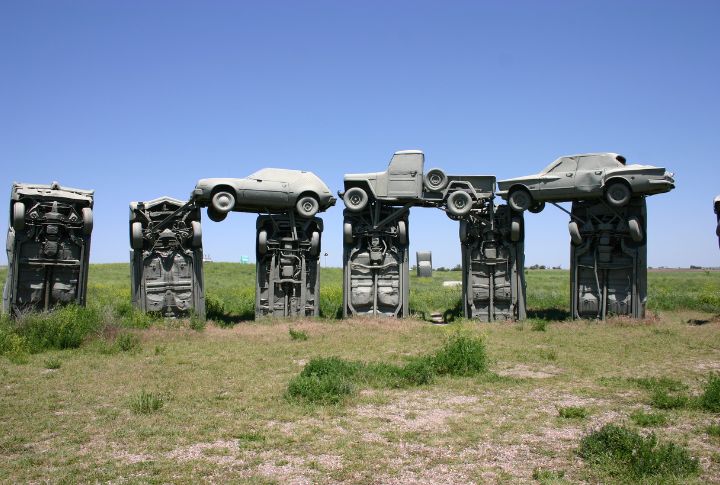
This unique automobile sculpture found near Alliance, Nebraska, is popularly called the Carhenge. Artist Jim Reinders conceived the idea in 1987 as a tribute to England’s famous Stonehenge, but instead of ancient stones, it uses vintage American cars. Its installation consists of 38 vehicles arranged similarly to the prehistoric monument.
Teapot Dome Service Station, Washington
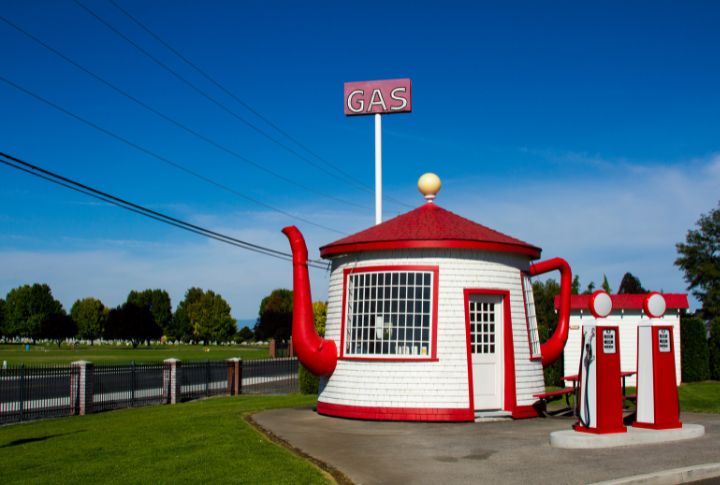
Built in 1922 to attract more customers, the Teapot Dome Service Station is an old gas station shaped like a huge teapot. Its massive kettle-like spout and handle fascinate tea lovers and curious passers-by. Over the years, the teapot has been restored and preserved as a historical landmark.
TeamLab’s Flower Installation, Japan
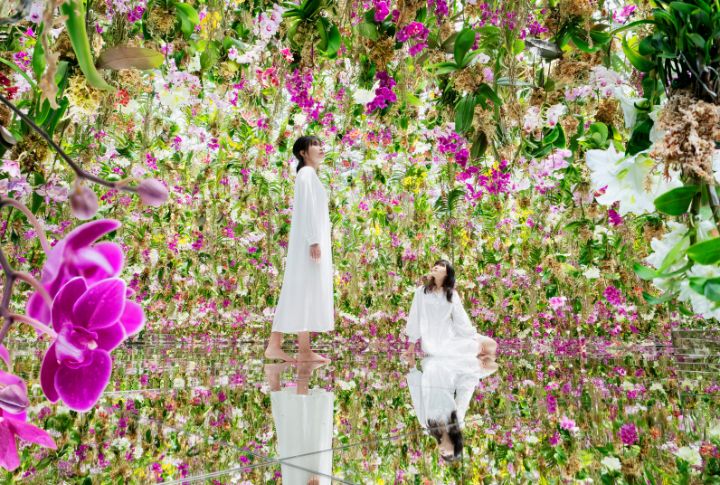
At TeamLab’s art installation, visitors walk through a space filled with about 13,000 flowers suspended from the ceiling. These flowers move as you approach, and a water supply system nourishes their roots. As the flowers part ways for each visitor, the garden creates an illusion of personalized interaction.
Wat Samphran Temple, Thailand
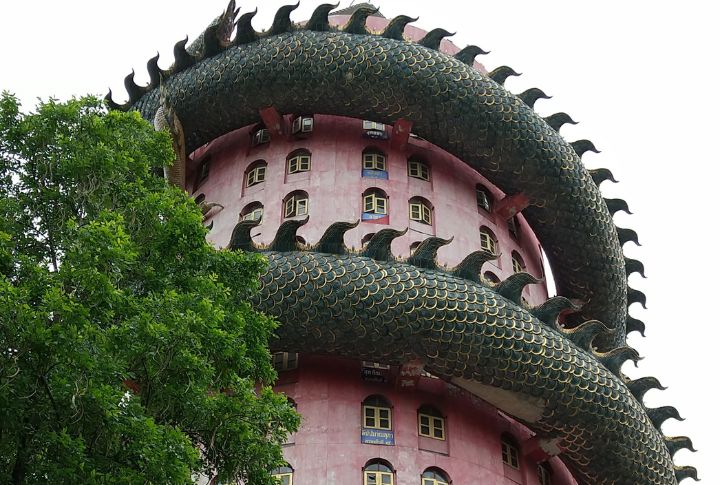
Thailand’s Wat Samphran Temple is a 17-story pink cylindrical tower encircled by a giant green dragon. This sculpted dragon, with its intricate scales and fierce visage, coils upwards from the ground and perches its head near the top of the tower. Visitors can scale the building through a spiral staircase within the dragon’s body.

